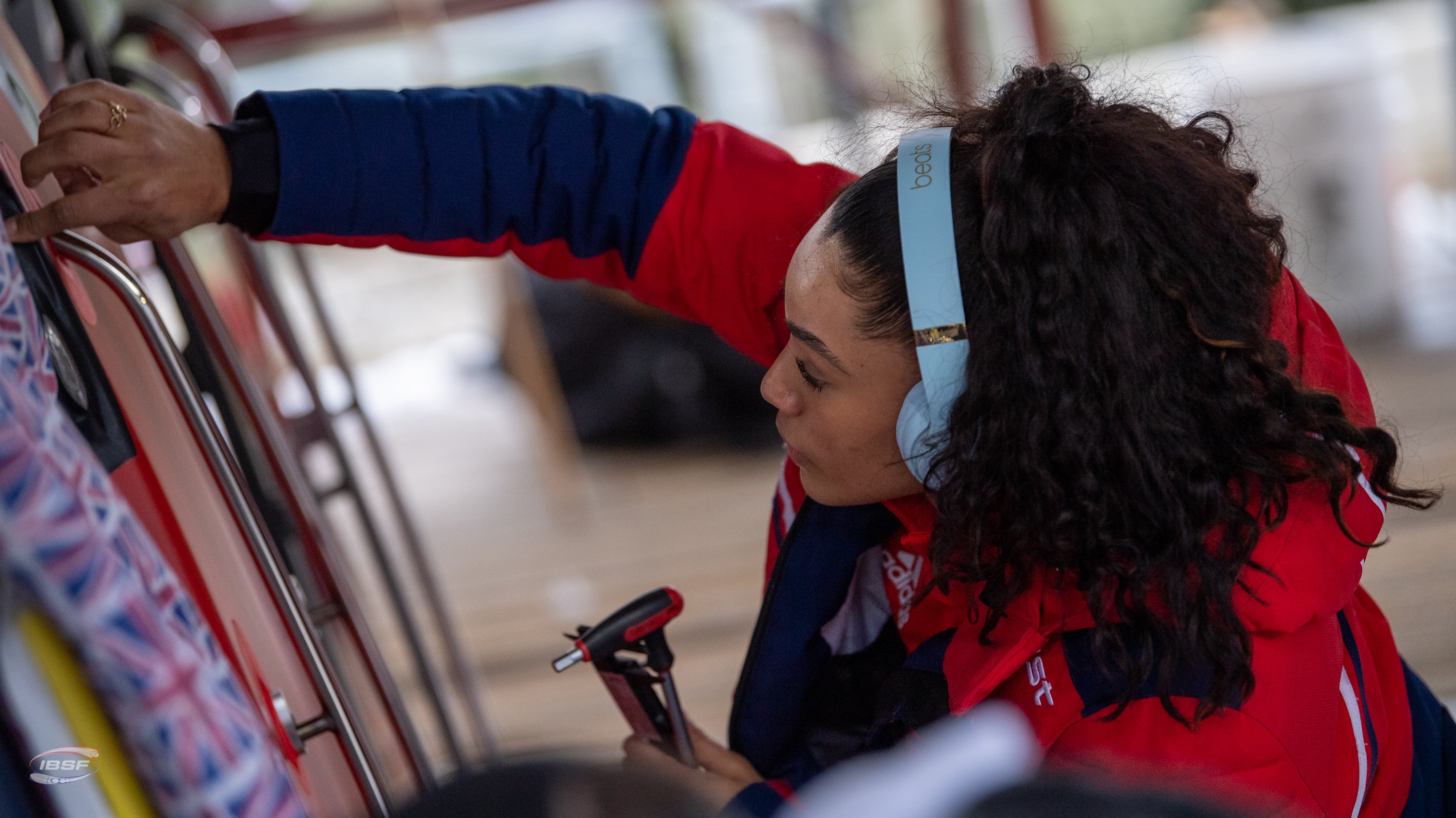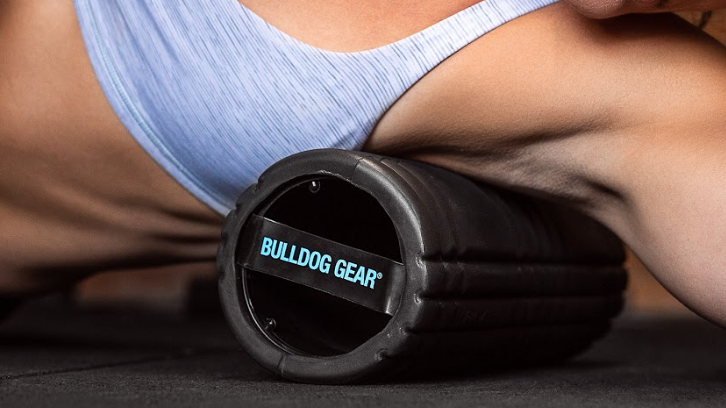|
20/09/2022 | Andrew Tracey Andrew Tracey is a long time collaborator with Bulldog Gear. A coach, writer and current fitness editor of Men’s Health Magazine, he has been in and around the fitness industry for the past 17 years. Having enjoyed and endured a number of disciplines from endurance racing, to strongman, to Crossfit AT enjoys getting neck deep in the practice just as much as the theory. |
When it comes to building muscle, bodyweight movements are often heaped onto the ‘ineffective’ pile in favour of slinging around dumbbells, barbells and other varieties of heavy tin. The main reason most trainers or trainees would cite for veering away from push-ups and the likes would be their relative ‘easiness’ when compared to heavy squats, presses and rows.
Paradoxically though, I’d gamble big bucks on the fact that the majority of regular gym goers can’t actually perform 10 strict pull-ups; which makes you question their status as an ‘easy’ movement.
No, I think we all know that the pull-up is an incredible compound ‘lift’ for the upper body, it’s just that it can be incredibly hard, and incremental progress is harder to map out; that’s why we’ve previously shared plenty of tips to help you get those first few reps.
But, if you’ve already mastered the basics and you’re firmly on the righteous path of the pull-up we’ve got a few new variations to spice up your regime next time you hit the bar, along with the rationale behind performing each version.
The Pull-up
The classic for a reason. The relatively wide, pronated (hands facing away) grip gives you a good spread of all of the benefits associated with pull-up movements. The pronated grip targets the lower trapezius (the middle of the upper back) and lats more effectively than closer gripped varieties that will follow on this list, but relies less heavily on the biceps- which depending on your goals, could either be a positive or negative.
One of the downsides of this variation is the stress that it can put on your shoulders, particularly if you begin to lose control of the eccentric, lowering portion of the movement resulting in jarring impacts to your shoulder joint whilst it’s in a slightly compromised, internally rotated position.
The Chin-up
Slightly more forgiving (and thusly easier to master) than the pull-up, this close grip, palms supinated (facing in) variation is the first full bodyweight pull that many trainees are able to master.
By turning the hands to face your body, you’re better able to draft in your biceps brachii (which most of us simply know as ‘the biceps’) and even your pecs to help. Whilst this makes the movement much easier to perform for many, it does shift the emphasis slightly away from your middle back.
If you haven’t yet mastered high rep sets of pull-ups, performing ‘drop sets’ where you shift to an underhand, chin-up grip and eek out a few more reps, once you can no longer perform a full pull-up is a great way to build strength.
Wide Grip
Working from the logic that a closer grip targets the back to a lesser degree, many trainees labour under the impression that the wider they grip, the wider a back they’ll build. This doesn’t quite pan out in reality. In fact, going wider doesn’t only reduce the range of motion you’re able to utilise, it counterintuitively makes the movement harder to perform, meaning your getting a lot less bang for you buck; performing fewer reps with a reduced range of motion.
Reduced pec and biceps involvement does up the stimulus to the mid-back out of necessity, but at this angle most trainees fail to fully retract their shoulder blades, selling themselves short.
Variety is the spice of life, and if the majority of your pulling movements are perform on the bar, then of course experiment with every grip in your arsenal. But, if you’re looking for an efficient return on your investment, stick to a standard width grip when going overhand.
Neutral Grip
By shifting to a compromise between underhand and overhand grips you put your shoulders into a much healthier position, ideal for longevity, rehab and avoiding overuse injuries. This same effect extends to your wrists; really and truly making the neutral grip pull-up your safest bet (literally).
The neutral grip also majorly works your brachialis—the long muscle in the biceps that sits beneath the ‘peak’ and can push the rest of the biceps upwards, adding serious size to those guns. Win, win.
If you’re performing pull-ups with added weight, switching to a neutral grip doesn’t only make the movement slightly less taxing on your joints, but may help you to eek out a few more reps.
Mixed Grip
The best of both worlds or the benefits of neither?
The mixed grip variations’ main strength lies in allowing your actual grip on the bar to go further. By grasping the bar with one hand in an overhand position, the other maintaining an underhand position, you create a sort of ‘clamping’ effect which increases your grip potential (a similar method is regularly used when deadlifting to stop the bar from ‘rolling out’ of your grip).
To that end, if it’s your grip strength that’s giving out before your traps, lats or other muscles groups and you find yourself dropping off of the bar too early- the mixed grip could be your ticket to building a bigger back.
The same benefits and drawbacks listed above for either under or overhand grip will (more or less) apply to which ever side of your body is utilising that grip, so be sure to alternate grip from set to set in order to balance out the stimulus.
Close Grip
The close grip (overhand) pull-up shares many similarities with the chin-up mentioned above, however a greater degree of stress is placed on the brachialis as opposed to the biceps proper (similar to using a neutral grip).
Pulling close enough and high enough, aiming to get your chest to, or above, the bar will result in increased pec and tricep activation as you manoeuvre behind the bar and actively try to pull the bar down to the front of your body.
A close grip also drastically alters the range of motion the shoulders must move through, making them a slightly more comfortable option for those with shoulder issues, however some trainees do find them more difficult to perform, especially versus chin-ups, and these may mitigate many of the benefit on a rep for rep basis.
Ring Pull-up
Ring chins, for me, reign supreme as the king of all pull-up variations, for the simple fact that you’re able to incorporate the benefits of nearly every variation listed above, whilst also changing the range of motion literally mid-rep.
You’d be hard pushed to find a more ideal piece of kit to perform your pulling movements with, especially if you’re working around injury, or just want to futureproof yourself against injury. The dynamic, malleable nature of the rings allows you to find and tweak the perfect range of motion for your own mechanics, injury profile and goals, and experiment from rep to rep. This is also an incredibly useful tool for prolonging sets and pushing your body beyond fatigue. For instance, you can begin by emulating a wide grip pull-up, reach technical failure with that grip before shifting to a neutral grip, and finally a much more accommodating ‘chin-up’ style grip, racking up more growth inducing reps than you’d otherwise be able to.
The unfixed nature of the rings also forces your shoulder joints into a state of hyper stabilisation, making micro tweaks and movements throughout each rep to maintain a smooth range of motion, working the smaller muscles responsible for stabilising the shoulder joint; perfect for building an injury free upper body.
Towel Grip Pull-up
‘Throwing in the towel’ may be an idiom synonymous with giving up, but when it comes to pull-ups, throwing a towel into the mix is a recipe for healthier shoulders and huge improvements in grip strength.
With nearly all of the benefits of the ring pull-up, including the ability to to alter your range of motion from rep to rep, the towel pull-up allows you to target nearly all of the muscle groups involved in any of the variations mentioned above. However, where this remix really comes into it’s own is in building the type of grip strength that everyone from fighters, to lifters, to labourers covet.



